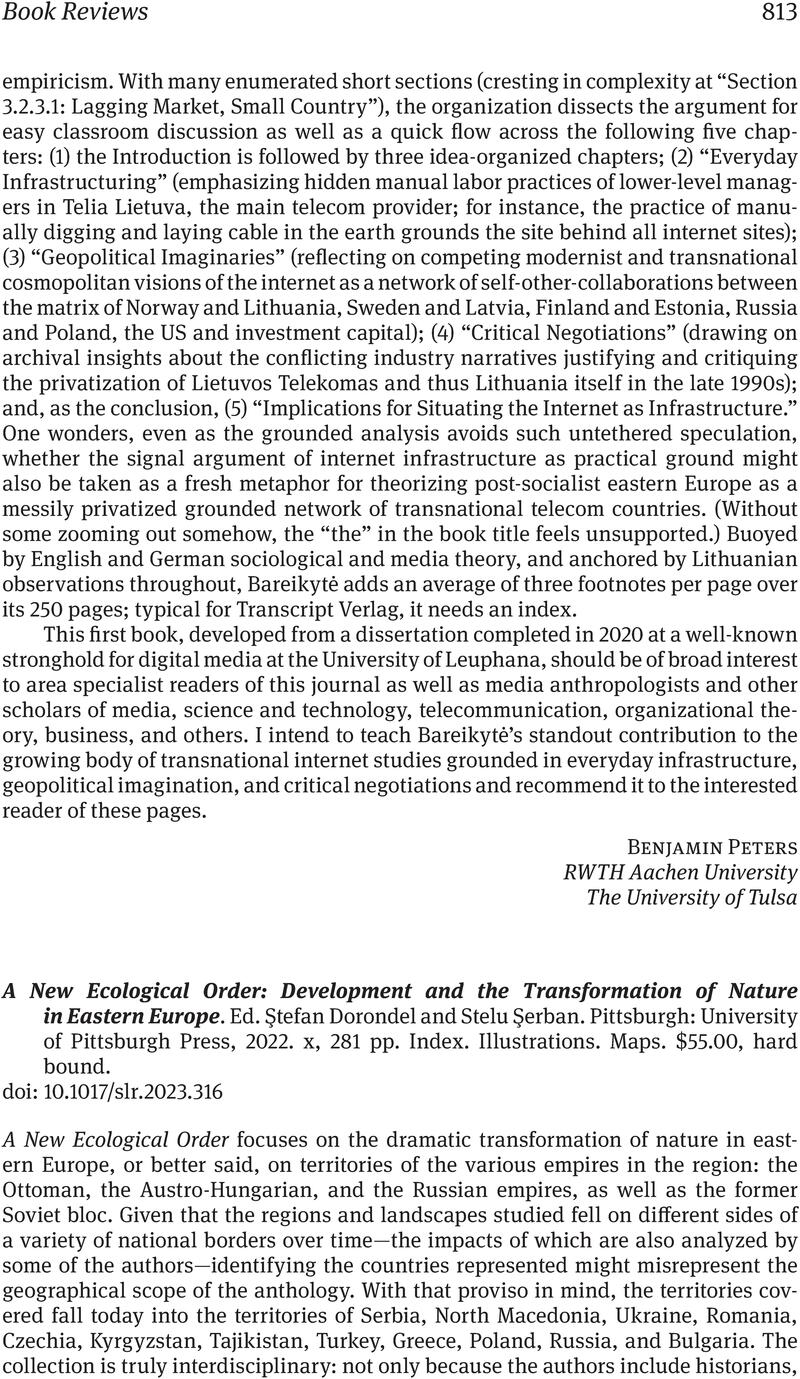No CrossRef data available.
Article contents
A New Ecological Order: Development and the Transformation of Nature in Eastern Europe. Ed. Ştefan Dorondel and Stelu Şerban. Pittsburgh: University of Pittsburgh Press, 2022. x, 281 pp. Index. Illustrations. Maps. $55.00, hard bound.
Review products
A New Ecological Order: Development and the Transformation of Nature in Eastern Europe. Ed. Ştefan Dorondel and Stelu Şerban. Pittsburgh: University of Pittsburgh Press, 2022. x, 281 pp. Index. Illustrations. Maps. $55.00, hard bound.
Published online by Cambridge University Press: 26 January 2024
Abstract
An abstract is not available for this content so a preview has been provided. Please use the Get access link above for information on how to access this content.

- Type
- Book Review
- Information
- Copyright
- Copyright © The Author(s), 2024. Published by Cambridge University Press on behalf of Association for Slavic, East European, and Eurasian Studies


